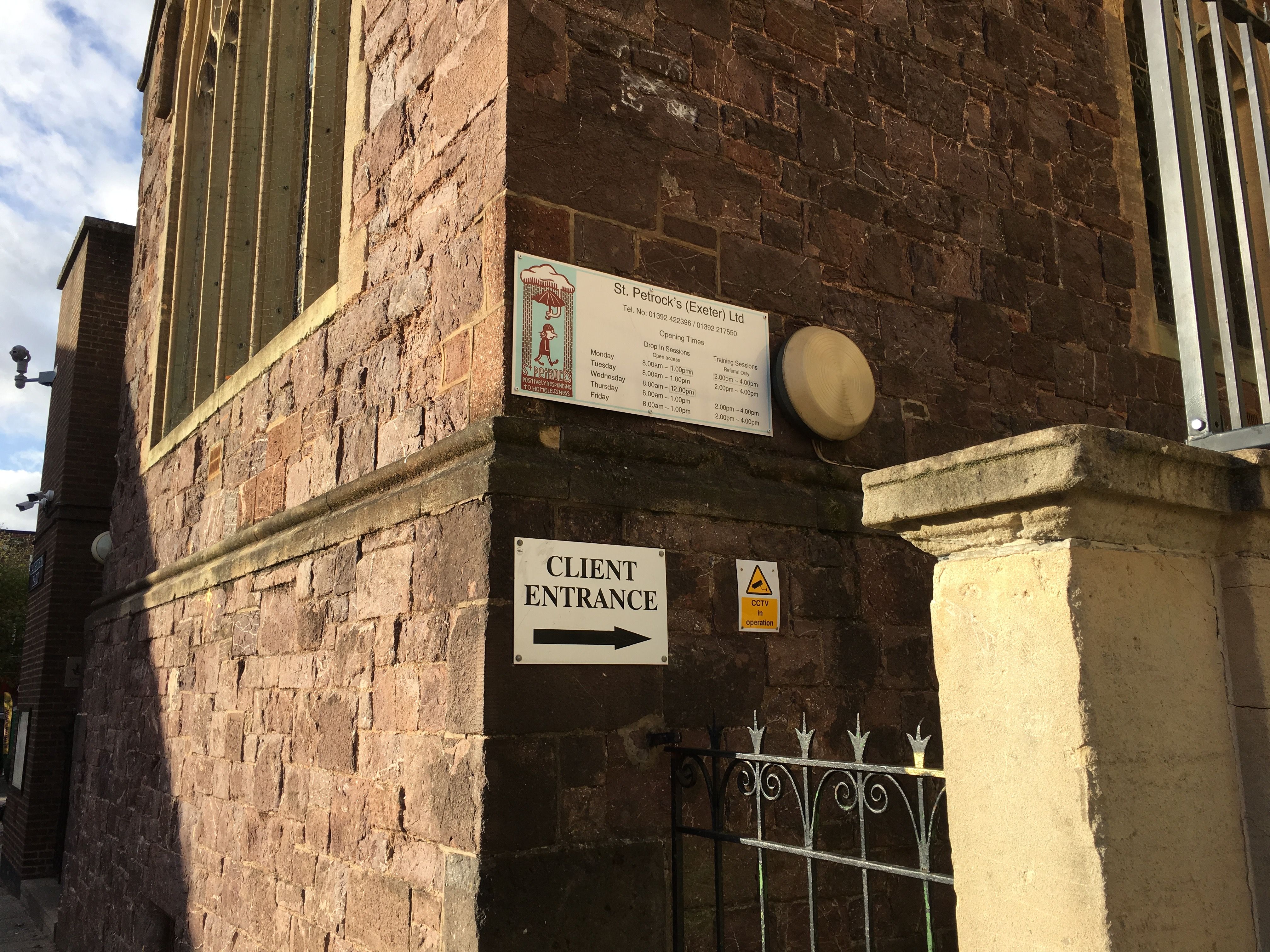In the city of Exeter in Devon, a small iron gate tucked down the side of an unimposing church on the Cathedral Green leads to St Petrock’s—an organization that provides emergency support for the increasing number of local street sleepers. The building St Petrock’s dates back to the 6th-century, with grand stained-glass windows, ornately decorated stone pillars and spiral staircases that provide a sharp contrast to the wall of damp rucksacks and signs that remind clients to leave their alcohol outside.
Tony Maguire completed his University work placement at St Petrock’s but never left. He has now been working there for 10 years. Huddled around the heater by the door, greeting clients and watching over the morning session, he says, “There are lots of people who do have maybe scurvy or scabies, just from how they’re presenting. There’s always people with bad chest infections, straight pneumonia—possibly TB.''
He adds, ''The concern for anybody, especially other clients and ourselves, is that we’re exposed without realizing it… I get the impression that there’s a reluctance, unless it’s completely confirmed, to raise concerns—so if we hear about it, it’s probably too late.”
Maguire gestures to a dimly lit nurses' room, filled with the standard medical paraphernalia. “The funding for a nurse to come out [to St Petrock’s] was cut, so this room is now just… flexible.” A nurse being on site was vital in ensuring that treatment plans were followed through. Many clients will not actively seek medical attention, despite being most exposed to the immunological situations in which these diseases thrive.
“We have a reluctance of the group that are at most risk to access any kind of healthcare whatsoever. They aren’t being monitored, they don’t see their GP [doctor] regularly and will not go often to the point that they’ll collapse. They are a hard core group that we have here and often their only access to healthcare is an emergency call to the ambulance, and even then they’ll often refuse to go into hospital. Their priorities are elsewhere.”
And for many, those priorities are drugs and alcohol. “If someone is using heroin (being a good example) that will become their daily focus. They will neglect all areas of nutrition so they’re usually very underweight and more prone to diseases and ailments.”
Downstairs in the kitchen, Linda Sillifant battles this most days. A former caterer, she has been the kitchen manager at St Petrock’s for 14 years and is responsible for feeding the clients two healthy meals a day.
Today, as a fairly average example, the lunch menu boasts a chunky vegetable soup and a main meal of roast chicken, potatoes, cabbage, sweetcorn and carrots, plus desert of rice pudding or fruit crumble for anyone who wants it. But just because food is available, and free, it does not mean that everyone will eat it.
In the kitchen, volunteer and PhD student at the nearby University of Exeter Laura Nesbitt washes up after the lunchtime rush, the kitchen peaceful for the first time since 6 am. She shakes her head. “There’s one girl that comes in, skinny as a rake, but she’ll only have one piece of bread or a tiny bowl of soup… It breaks your heart.”
It isn’t just the amount that clients are eating that is concerning in terms of malnutrition. Sillifant gestures towards the empty tables in front of the kitchen. “There have been bowls of fruit on those tables all morning, and they’ve hardly been touched…I’ve filled up the sugar bowl four times already though. Clients are much more interested in their sugary coffees.”
Employee Jake Harries explains that this is exacerbated by clients’ substance misuse problems: “Heroin rewires the brain, the reward pathways, so they crave sugary sweet stuff and won’t eat the wholesome food that’s on offer—but can eat three or four puddings or packets of biscuits… We get through bags and bags of sugar.“ In his eyes, this is logical though. “If you have some sugar it boosts your mood temporarily… When you’re down, you want things to cheer you up, whether that might be a sugary cup of tea or a cigarette.”
“Most people here will do whatever is available. Nutrition and healthy eating are for the rich—the well-off,” Harries says.
